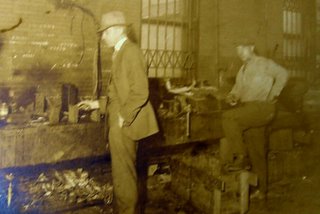ARTS EDUCATION STUDY

I have chosen today, to plagarize shamelessly from the newsletter of one of my favorite groups - the Illinois Arts Alliance newsletter. They have recently sent out their first newsletter, and they have included the following piece that bears reading.
Arts at the Core: Every School, Every Student
The status of arts education in Illinois public schools
In April 2005, surveys were sent to all Illinois principals and superintendents to better understand the status of arts education in Illinois schools and the challenges of delivering quality arts instruction. In total 234 superintendents and 751 principals responded for a response rate of 20.6% The respondents reflected a representative, statistically sound sample with respect to location, size, student population and school type.
Here are the Six Major Findings:
Major Finding 1: Almost all superintendents and principals agree that "The arts are an essential part of a quality education, that arts education helps students perform better on standardized achievement tests" and that "arts education is important to success in life."
Major Finding 2: Despite strong support for arts education, almost 20% of Illinois principals surveyed report having no arts program (visual arts, theater, music or dance) in their schools, AND 28% of superintendents report that none of the four arts disciplines were considered part of the core curriculum in their district.
Major Finding 3: Students in Illinois do not have equal access to arts education, the strongest correlating factor being where they live. Students in rural areas and small school districts tend to receive the least amount of arts instruction. Inconsistencies in the delivery of arts education also exist among schools within large urban districts and between suburban school districts.
Major Finding 4: One in ten Illinois school districts has no certified arts teachers in any arts discipline anywhere in the district. Twenty three percent of schools employ no arts specialist.
Major Finding 5: Eleven percent of school districts in Illinois require no arts instruction in any grade. In addition, 80% of high school principals report that students in their schools are not required to take a single course in the arts in order to graduate.
Major Finding 6: According to principals and superintendents, the most significant barrier to arts education is budget considerations, with lack of available time in the schoolday also a major barrier.
The full research report can be downloaded from www.IllinoisCreates.org
While this report is Illinois specific, it is indicative of what is happening in many areas across the country. For the record, Illinois has, at last count, 887 school districts in three types: Elementary (K-8), High School (9-12), and Unit (K-12). A full 25% of high schools outside of the city of Chicago, have a total student population of less than 250 students across four grades.


